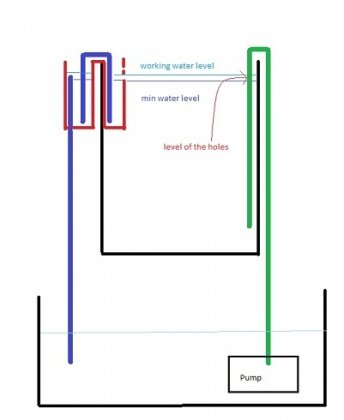I think people are using confusing terminology in this thread .... lets see if I can clear this up:
You do not drill holes in the lines from the tank to the sump. in a HOB overflow, this line needs to maintain siphon & normally should never be empty (between the 2 boxes of the overflow.)
The return line people are talking about goes from the sump to the tank. This line is driven by the pump, so has no need to maintain siphon. Normally, you drill 1 (or 2, or 3) very small hole so the majority of the water from the pump goes through the normal outlet (the least resistance).
When the power goes out, water will drain down both sides. From the overflow box side, the water will drain to the level of the bottom of the rakers. In the pump side, it will drain to the holes. Basically, you need to have room in the sump to take in all the water that will drain to whichever level is lower.

